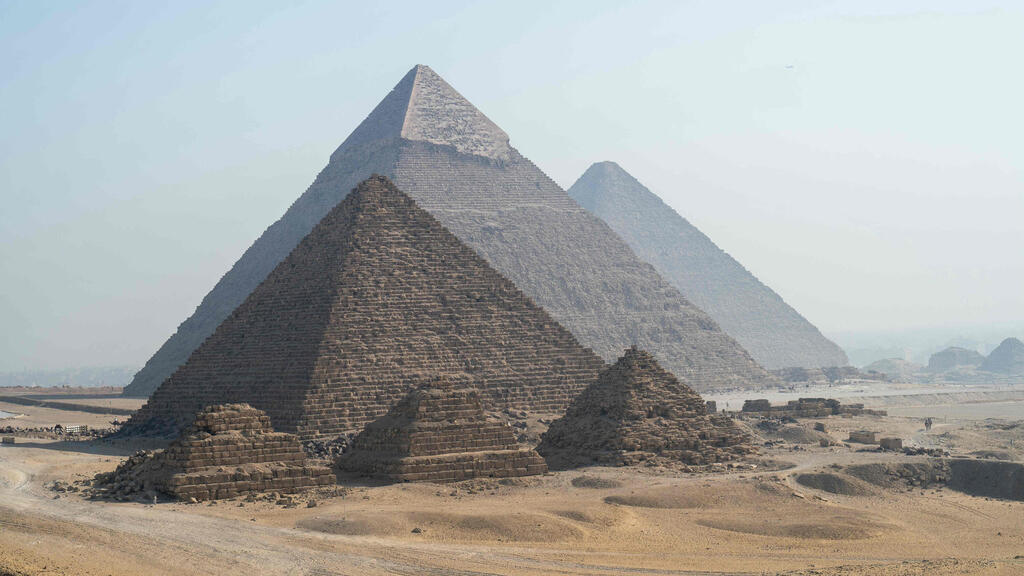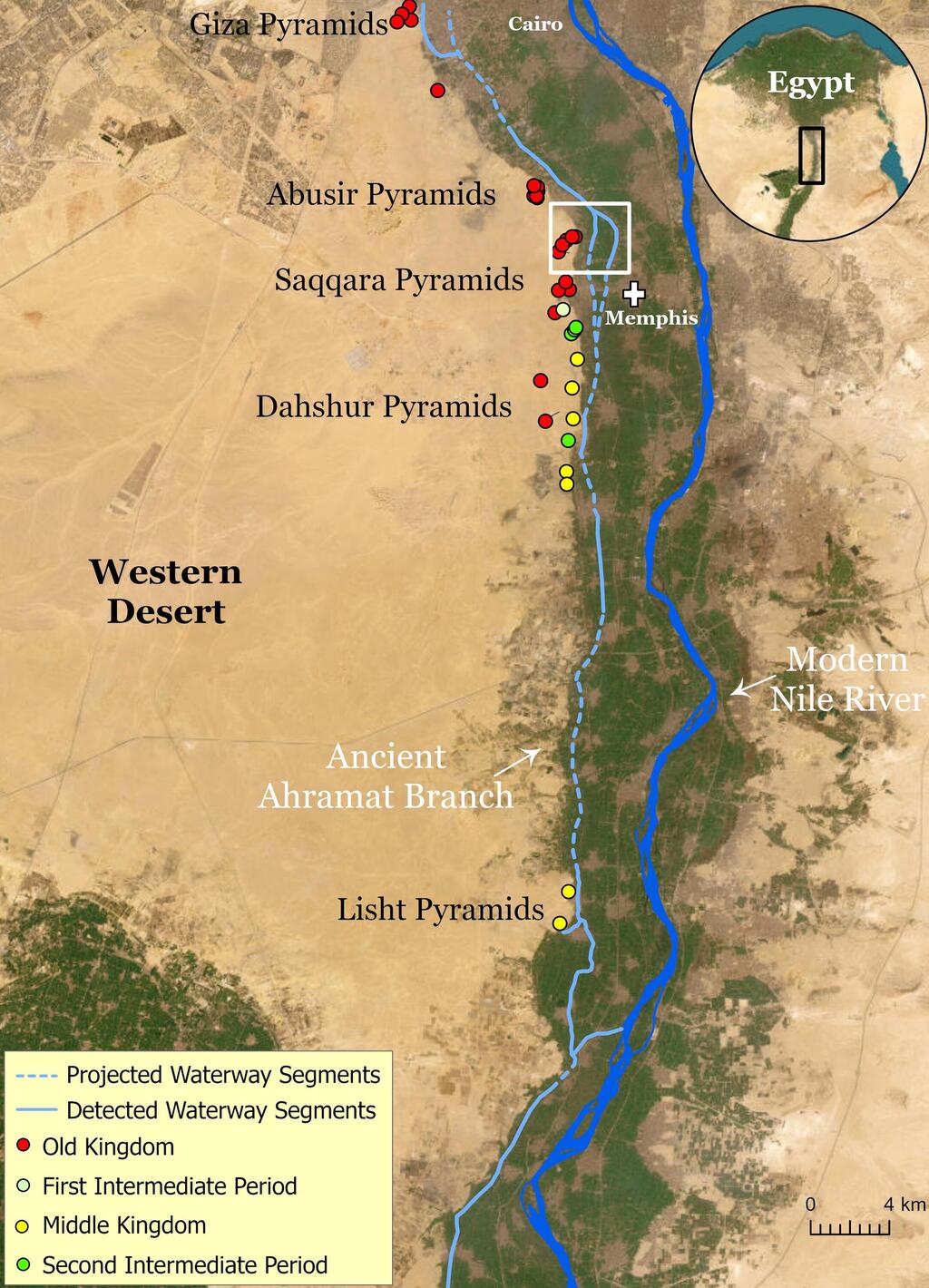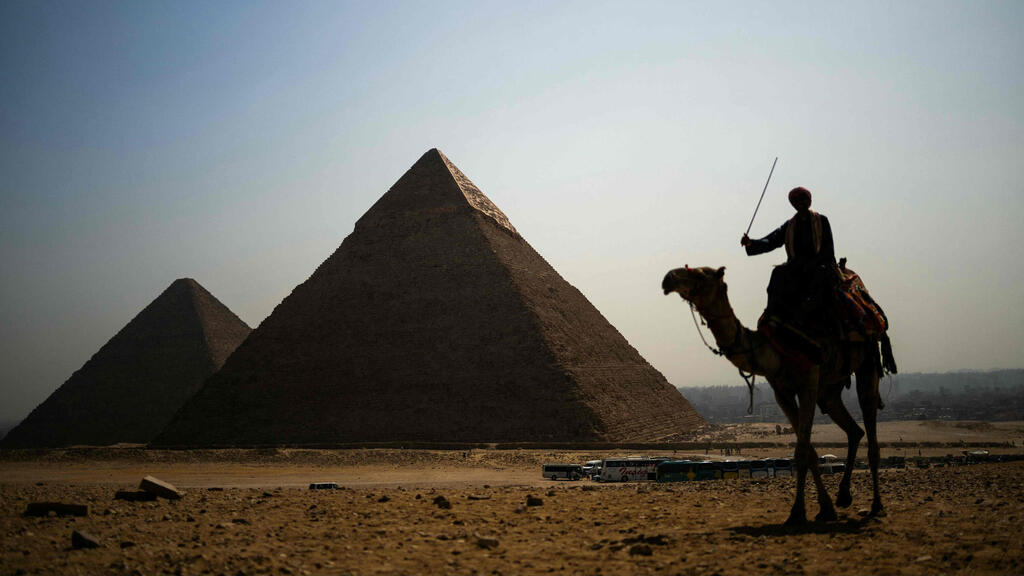Getting your Trinity Audio player ready...
Scientists have discovered an ancient branch of the Nile River near 30 pyramids in Egypt, as they believe that the ancient Egyptians used this now-dry branch to transport the massive stones needed to build the colossal structures.
According to the study published Thursday in the journal Communications Earth & Environment, this branch of the Nile was approximately 64 kilometers long and passed near the famous Giza pyramid and other pyramids.
Hidden for thousands of years beneath desert sands and agricultural lands, this ancient Nile branch could explain why 31 pyramids were built in a chain along a desert strip in the Nile Valley, dating back 4,700 to 3,700 years ago.
The strip, close to the ancient Egyptian capital of Memphis, includes the Great Pyramid of Giza—the only surviving structure of the Seven Wonders of the Ancient World—alongside the pyramids of Khafre, Khufu, and Menkaure.
For a long time, archaeologists believed that the ancient Egyptians must have used a nearby waterway to transport the enormous materials used in pyramid construction. "But no one was sure of the location, shape, size, or proximity of this waterway to the actual pyramid sites," said Professor Eman Ghoneim of the University of North Carolina Wilmington, the lead author of the study.
The research team used radar-based satellite images to map the river branch. Professor Iman Ghoneim said the radar provided researchers with "the unique ability to penetrate the sand and produce images of hidden features, including buried rivers and ancient structures." Field tests and sediment samples collected from the site confirmed the presence of the ancient river branch.
According to the researchers, this ancient branch was gradually covered by more and more sand over the years, suggesting a significant drought that affected Egypt around 4,200 years ago.
The pyramids in the Giza area were situated on a plateau, about a kilometer from the banks of this river branch. Professor Ghoneim added that there might have been an ancient port in the Giza area. "This indicates that the river played a key role in transporting the massive building materials and workers needed to construct the pyramids," she explained.
The question of how the ancient Egyptians managed to build such enormous structures remains one of history's great mysteries. Moving these heavy materials, most of which came from southern Egypt, "would have been much easier via the river" than over land, said Susan Onstine from the University of Memphis, who also contributed to the study.
The banks of this ancient river branch could have been where entourages gathered during the funerals of pharaohs before their bodies were transported to their final resting places within the pyramids, Onstine noted. This river branch might also explain why the pyramids were built in these specific locations.
"Water flow and volume changed over time, so the kings of the Fourth Dynasty had to make different choices than the kings of the Twelfth Dynasty," said the American researcher. "This discovery reminded me of the connection between geography, climate, environment, and human behavior."




